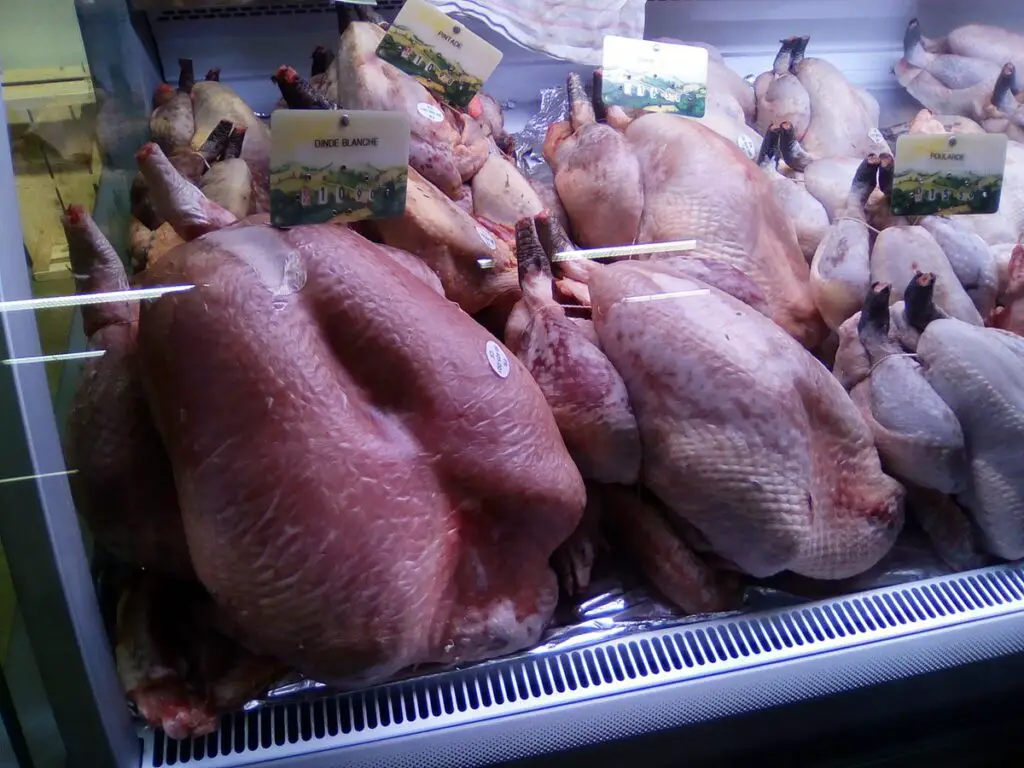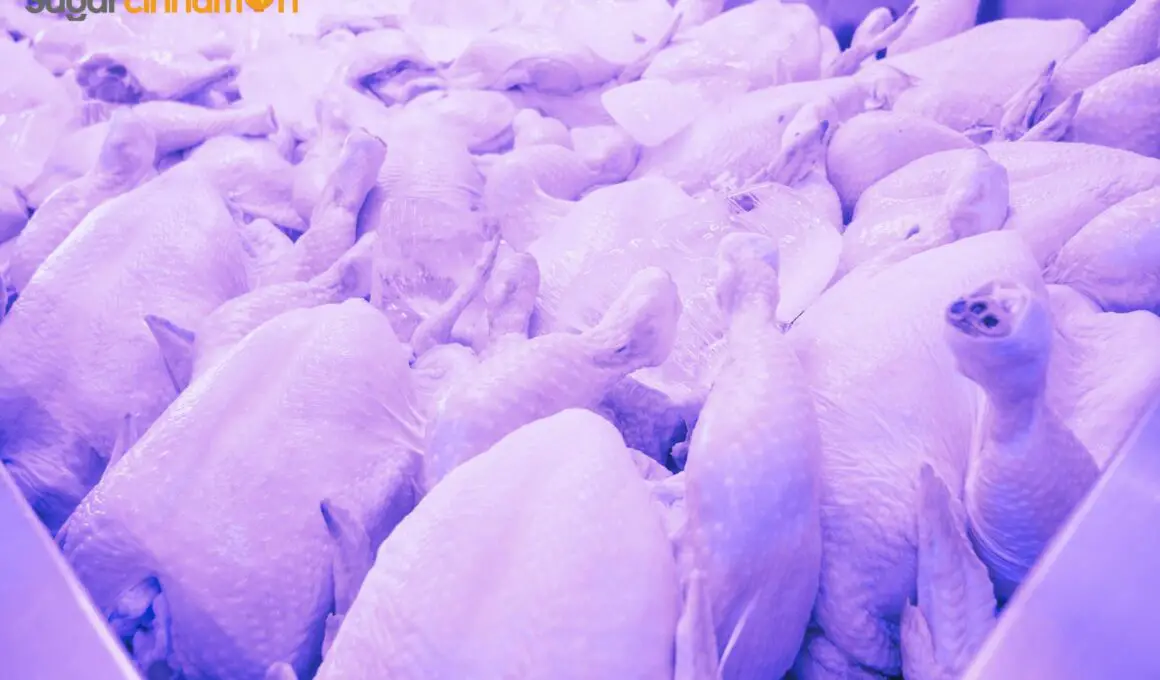Table of Contents Show
Purple definitely sounds like a weird color to be on your favorite chicken meat, and there are lots of expected questions about it. When you get a chicken from the grocery store, it can be hard to tell if it’s a bruised purple chicken meat that is in the package, however, there have been complaints about getting blood-pink or purple chicken meat after opening. Purple chicken meat can be quite alarming, and it is important to learn if it is safe to eat.
There is a common myth that chicken meat that turns purple has run out of juice, but is that meat purple chicken meat safe to eat? You might have noticed that your raw chicken meat looks purple. This can be quite confusing, and sometimes it can be hard to tell if the meat is still safe to eat or not.
Chicken meat can be a really nutritious choice, but it can easily get contaminated by Campylobacter bacteria and sometimes with Salmonella and Clostridium perfringens bacteria, if eaten, you can get a food-borne illness. Hence, you have to be conscious of your meat color. Also, understanding the color your chicken is meant to be cooked or uncooked can ensure you are not eating chicken meat that has gone bad.
Eating chicken that has gone bad can make you very ill, which is why it should be avoided. But as for purple chicken meat, is it safe to eat or not? Read on to learn all about purple chicken meat and also what color your chicken should not be.
Can There Be Bruises on Chicken Meat?
Yes, there can be bruises on chicken meat, but not the black and blue bruises you see on humans. There are a few different ways your chicken could have gotten the bruise, but the first and most common one is being manhandled during processing. A light-colored bruise is really of not much concern, but it can be a dark red or purplish-colored bruise, which indicates that the muscle tissue is damaged.
Another way chicken meat might have been bruised is if it was cooked too quickly or roughly, the heat would cause the muscle tissue to contract and in turn, you get a bruised chicken. Lastly, bruises can occur on chicken meat if it is frozen and thawed too quickly, the ice crystals can damage the muscle tissue and lead to bruising.
Bruising in chicken is indicative of a crash, and it can appear greenish as well, depending on the cause of the bruise. Bruises on chicken meat do not pose any health risks, but they can affect the taste and quality of your meat. Bruised chicken meat ends up being tough and less flavorful compared to its counterpart.

Purple Chicken Meat: Safe to Eat or Not?
Purple chicken meat is actually safe to eat, and the color is a result of not being exposed to oxygen. Chicken contains a protein called myoglobin and when it is exposed to oxygen, it turns red but if not, it remains purple. So, if you see raw chicken meat that is purple, you do not have to panic, it is still safe to eat. The weird purple color is also described as a herring and has nothing to do with safety.
The purple color not only happens to raw chicken meat but if this purple marrow stains the bone, the color of the meat adjacent to it won’t change regardless of the temperature it is being cooked, although it is advised that you cook it thoroughly before eating.
Unless there are punctures, cuts, or years associated with the purple color, then your chicken meat is safe to eat. The myoglobin that causes this color change is a protein responsible for storing oxygen, and it leaks into the meat. So your chicken meat is safe to eat.
Warning
While color differences do not often indicate that the meat has gone bad, or it is old, it is important that you look out for other signs that show if it is bad. If your chicken meat turns purple, it is still safe to eat, but if your chicken meat is slimy or has changed color to yellow, green, or gray, these are signs that your chicken has no doubt gone bad.
What Color Should Chicken Meat Not Be?
The color of raw chicken should not be gray, green, or any other color besides light pink. Fresh raw chicken should have a pink hue to its fats aside from being white, but if this color happens to fade, and takes on a yellow or gray color, then it is no longer safe to eat. It is normal if there are mild color changes on the chicken after thawing, but if it has mold or different color changes, it is not safe to eat.
Final Thoughts
You often can’t tell if your chicken meat is safe to consume just by looking at it. So when purchasing or storing meat, you have to be conscious of its appearance and watch out for any indication that it is not safe to consume.
Fresh-cut chicken meat is often the one that takes on purplish color, and as mentioned above, it’s the oxygen from the air reacting to your meat’s pigment. In conclusion, purple chicken meat is safe to eat.













